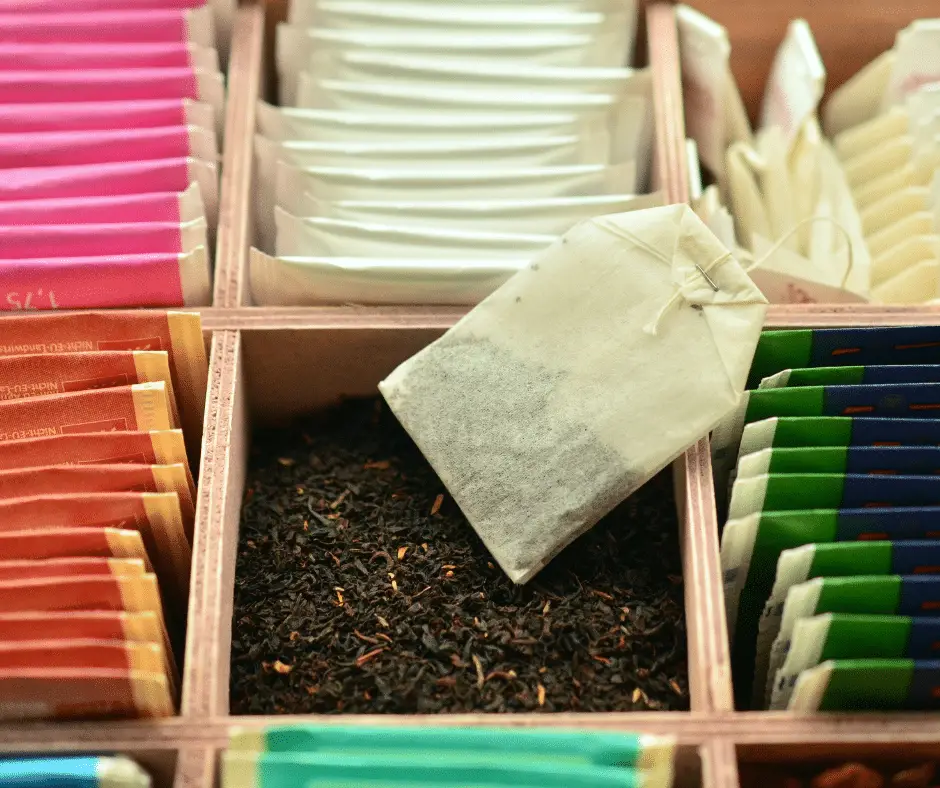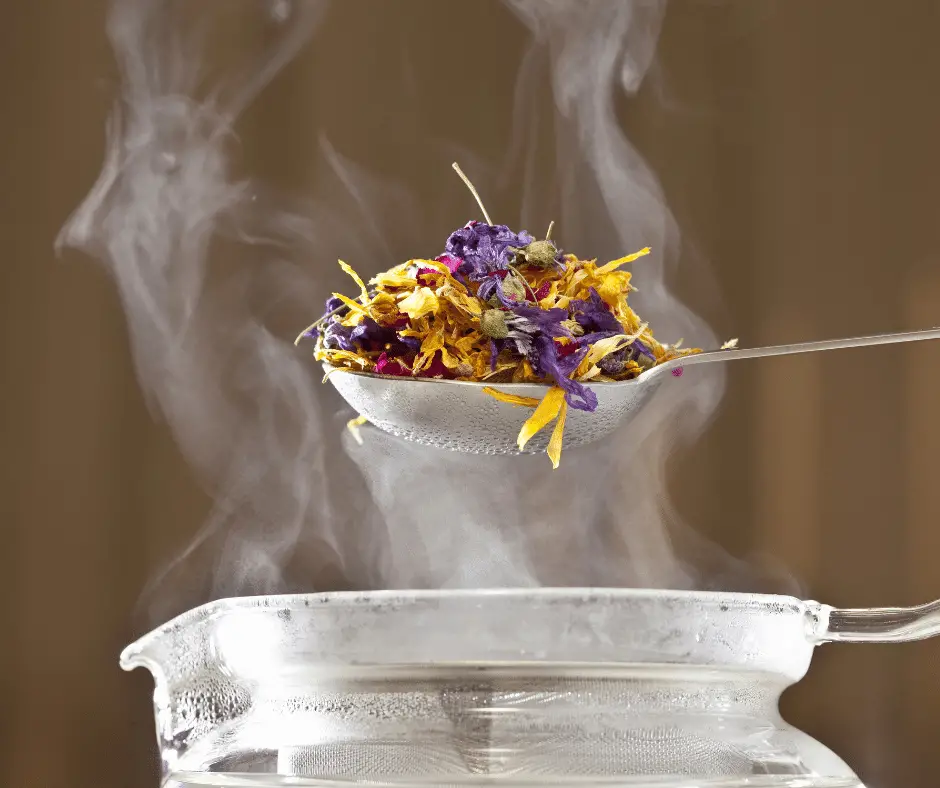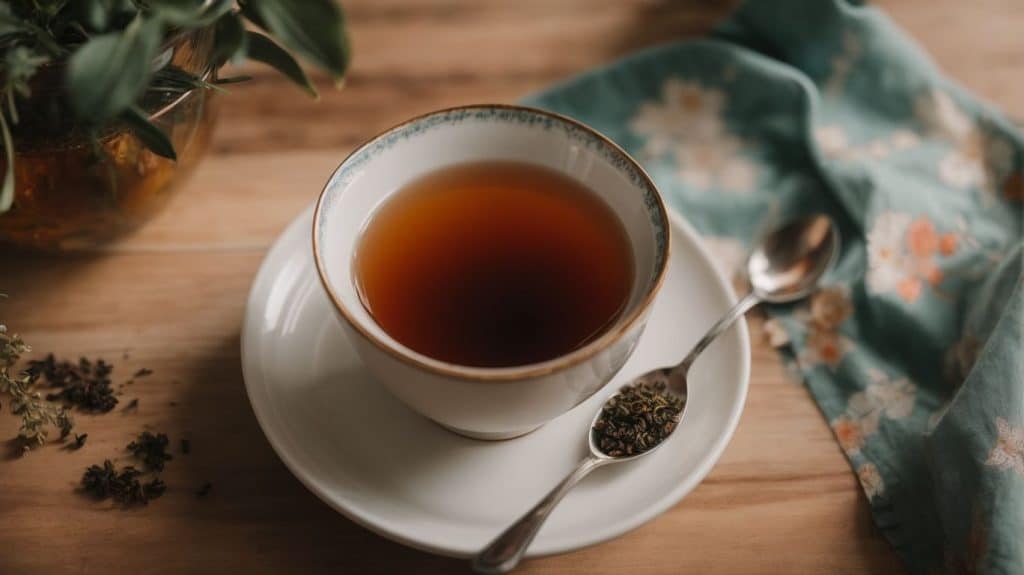Tea bags have become a staple in many households as a convenient way to brew a cup of tea. But have you ever wondered what happens to those tea bags after use? Are they compostable, and what are the benefits and drawbacks of composting them? In this article, we will explore the composition of tea bags, their compostability, and alternative options for eco-friendly tea consumption.
Tea bags are typically made of a combination of paper, plastic, and heat-resistant fibers. The paper used is usually made of wood pulp, and the plastic is either polyethylene or polypropylene. The heat-resistant fibers prevent the bag from breaking during brewing. Some tea bags also have staples or glue used to seal the bags.
There are mainly two types of tea bags - traditional paper tea bags and more recent pyramid-shaped bags. Traditional paper tea bags are made of paper and may also have a string and tag attached for convenience. Pyramid-shaped bags are made of a mesh material and have a larger surface area for better infusion of the tea.
Now, coming to the question, are tea bags compostable? The answer is yes and no. Traditional paper tea bags are generally compostable, as they are made of paper and do not contain plastic. However, pyramid-shaped bags may not be fully compostable as they contain a small amount of plastic that may not break down completely in a composting process.
Composting tea bags has several benefits. They provide nutrients to the soil and help improve its structure. They also help retain water, making it more accessible to plants. Moreover, composting reduces waste and helps divert it from landfills.
On the other hand, there are some drawbacks to composting tea bags. As mentioned earlier, some tea bags contain plastic, which may not fully decompose and can leave behind microplastics in the soil. Additionally, some tea bags may contain chemicals, such as bleach, which can be harmful to the environment.
If you want to compost your tea bags, here's how to do it. First, remove any staples or glue from the tea bags. Cut open the bags and empty out the tea leaves into your compost bin. You can also compost the tea bags directly in your garden by burying them in the soil.
Alternatively, there are some environmentally-friendly options for tea consumption. You can use loose leaf tea, which comes in biodegradable packaging, or you can reuse tea bags by steeping them multiple times. You can also purchase tea bags that are specifically labeled as compostable.
In conclusion, traditional paper tea bags made of paper and without strings or tags are generally compostable. However, it is essential to check the label for any plastic or chemicals before composting. If you are looking for more eco-friendly options, consider using loose leaf tea or purchasing compostable tea bags. Let's make a conscious effort to reduce our environmental impact, one cup of tea at a time.
Key Takeaways:
What Are Tea Bags Made Of?
Tea bags are typically composed of paper, nylon, silk, or PLA (plant-based material). While paper tea bags are biodegradable and compostable, some brands may use non-compostable materials like nylon or synthetic plastics. It is important to check the materials used in your tea bags and opt for compostable options or switch to loose leaf tea with a reusable infuser or strainer for a more environmentally-friendly choice.
What Are The Different Types Of Tea Bags?
There are various types of tea bags available in the market, each providing a unique and enjoyable brewing experience. Here is a table outlining some common types of tea bags and their characteristics:
| Type of Tea Bag | Description |
|---|---|
| Paper Tea Bags | Made from cellulose fibers, these bags allow for a quick and convenient infusion. |
| Nylon Tea Bags | These bags have fine pores, ensuring a smoother and cleaner brew. |
| Silk Tea Bags | Often used for premium teas, silk bags offer a luxurious and indulgent experience. |
| Mesh Tea Bags | Made from nylon or polyester, these bags allow for better water flow and a more flavorful brew. |
| Pyramid Tea Bags | These spacious bags allow for better circulation and release of flavors. |
| Biodegradable Tea Bags | Made from plant-based materials, these bags are not only eco-friendly but also offer a delicious brew. |
Fact: Did you know that the first tea bag was invented in the early 20th century by Thomas Sullivan, who originally intended them to be used as samples rather than a brewing method?
Are Tea Bags Compostable?
Yes, many tea bags are compostable. However, it's important to note that not all tea bags are created equal. Traditional tea bags, which are made from paper or silk, are generally compostable. These bags will naturally break down over time in a compost pile or bin. On the other hand, some tea bags may take longer to decompose or may not decompose at all, as they are made with a combination of paper and plastic fibers. When shopping for tea bags, be sure to choose brands that are specifically labeled as compostable or biodegradable. Additionally, choosing loose leaf tea is a sustainable option, as it can be brewed in a reusable infuser or strainer. So, before adding your tea bags to the compost, double check the packaging to ensure they are indeed compostable.
In 2018, researchers made a groundbreaking discovery of the world's oldest tea leaves in a Chinese burial site. These tea leaves, dating back to approximately 2,100 years ago, were found in the tomb of a Han dynasty emperor. This finding serves as evidence of the long-standing presence of tea in human culture and emphasizes the importance of sustainability in the production and disposal of tea-related products, including compostable tea bags.
What Are The Benefits Of Composting Tea Bags?
Composting tea bags offers numerous advantages for both your garden and the environment. Firstly, it enriches the soil by providing essential nutrients like nitrogen and potassium, which are crucial for supporting plant growth. This can lead to stronger and more vibrant plants. Secondly, composting tea bags helps reduce waste by diverting them from landfills and allowing them to decompose naturally. Additionally, tea bags can improve soil structure and moisture retention, promoting better drainage and reducing the need for excessive watering. Moreover, composting tea bags can attract beneficial organisms like earthworms, which aid in the decomposition process and enhance soil health. Lastly, it is a cost-effective and sustainable alternative to synthetic fertilizers, as it utilizes organic materials and reduces the need for chemical additives. Overall, the benefits of composting tea bags contribute to a greener and more sustainable gardening practice.
What Are The Drawbacks Of Composting Tea Bags?
When considering composting tea bags, there are a few drawbacks to keep in mind. One potential issue is that not all tea bags are suitable for composting. Some may contain plastic or other materials that do not biodegrade, which can contaminate the compost pile. Even if the tea bags are compostable, they may take a considerable amount of time to fully break down in the compost bin. This means it may take longer for the tea bags to turn into nutrient-rich compost that can be utilized in the garden.
Additionally, tea bags can attract pests such as rodents or insects to the compost pile, which can cause damage or spread diseases. To minimize these drawbacks, it is important to carefully check the packaging of tea bags for compostability and choose brands that use biodegradable materials. It is also recommended to cut open the tea bags before composting to aid in their decomposition.
How To Compost Tea Bags?
Tea bags are a common household item that many people use on a daily basis. However, did you know that they can also be composted? In this section, we will discuss the steps you can take to properly compost your tea bags. From removing any staples or glue to composting the tea leaves in your garden, we will cover all the necessary information to ensure your tea bags can be safely and effectively composted.1. Remove Any Staples Or Glue
When composting tea bags, it is important to remove any staples or glue before adding them to your compost bin or garden. Here are the steps to follow:
- Inspect the tea bag and ensure there are no staples or glue attached.
- If there are staples, carefully remove them using a staple remover or pliers.
- If there is glue, gently peel or scrape it off using a knife or your fingers.
- Once the tea bag is free of staples and glue, cut open the bag to release the tea leaves.
- Add the tea leaves to your compost bin or pile.
- Mix the tea leaves with other compostable materials like fruit and vegetable scraps, yard waste, and coffee grounds.
- Ensure proper moisture levels in your compost pile and turn it regularly to aid decomposition.
- Alternatively, you can directly compost the tea bags in your garden by burying them in the soil.
By following these steps, you can effectively compost tea bags and contribute to the sustainability of your garden or composting system.
2. Cut Open The Tea Bags
Cutting open tea bags is an essential step in the process of composting them. Here is a step-by-step guide on how to properly cut open tea bags:
- Begin by collecting your used tea bags.
- Gently squeeze out any excess liquid from the tea bags.
- Using a pair of scissors, carefully cut open the tea bags along the top or side.
- Empty the tea leaves from the tea bags into a separate container.
- Dispose of the empty tea bags in your compost bin or pile.
- Alternatively, you can directly add the tea leaves to your compost bin without cutting open the tea bags.
- Remember to remove any staples, strings, or tags from the tea bags before composting.
- Mix the tea leaves with other organic materials in your compost bin to accelerate the decomposition process.
Cutting open tea bags is a simple way to compost tea leaves and reduce the time it takes for them to break down. It also ensures that any materials used in the tea bags, such as paper or plant-based fibers, can be properly composted.
In addition to cutting open tea bags, you can also opt for loose leaf tea, reuse tea bags, or purchase compostable tea bags as alternative options to reduce waste and promote sustainability.
3. Add The Tea Leaves To Your Compost Bin
To incorporate tea leaves into your compost bin, follow these simple steps:
- Remove any staples or glue from the tea bags.
- Cut open the tea bags to release the tea leaves.
- Add the tea leaves to your compost bin, making sure to mix them well with other compostable materials.
- Compost the tea bags in your garden using your usual composting process.
Pro-tip: Tea leaves are a fantastic addition to compost bins as they provide essential nutrients and help improve soil structure. They are a rich source of nitrogen, phosphorus, and potassium, which are vital for plant growth. Remember to balance the tea leaves with other compostable materials such as kitchen scraps, yard waste, and dry leaves. This will create a well-rounded compost that will benefit your garden and plants. Enjoy the process of composting tea leaves and contribute to a sustainable and eco-friendly lifestyle.
4. Compost The Tea Bags In Your Garden
Composting tea bags in your garden is an eco-friendly way to reduce waste and nourish your plants. Follow these steps to effectively compost tea bags in your garden:
- Remove any staples or glue from the tea bags.
- Cut open the tea bags to separate the tea leaves from the bags.
- Add the tea leaves to your compost bin. Tea leaves are rich in nitrogen, which aids in the decomposition process.
- Compost the tea bags in your garden by incorporating them into the soil or using them as mulch around your plants.
Pro-tip: Tear the tea bags into smaller pieces to speed up the composting process. This allows for better airflow and quicker decomposition.
Composting tea bags in your garden not only reduces waste but also adds organic matter and nutrients to your soil, promoting healthy plant growth. It's a simple and sustainable way to make the most of your used tea bags.
What Are Some Alternatives To Composting Tea Bags?
While composting tea bags is a popular and eco-friendly way to dispose of them, it may not be a feasible option for everyone. Fortunately, there are alternatives to consider. In this section, we will discuss three alternatives to composting tea bags: using loose leaf tea, reusing tea bags, and purchasing compostable tea bags. Each method has its own benefits and can be easily incorporated into your daily routine. Let's take a closer look at these alternatives and how they can help reduce waste from tea bags.1. Use Loose Leaf Tea
When it comes to enjoying a cup of tea, using loose leaf tea can provide a more flavorful and customizable experience. Here are the steps to using loose leaf tea:
- Measure the desired amount of loose leaf tea based on your taste preference and the strength you desire.
- Boil water to the appropriate temperature for the type of tea you are using. Different teas require different temperatures to achieve the best flavor.
- Place the loose leaf tea in a tea infuser or teapot with a built-in strainer.
- Pour the hot water over the tea leaves and let it steep for the recommended amount of time. This allows the flavors to infuse into the water.
- After steeping, remove the tea leaves or strain them out, ensuring a smooth and enjoyable cup of tea.
- Add any desired extras like honey, milk, or lemon to enhance the flavor, if desired.
Loose leaf tea has a rich history that dates back centuries. It was the traditional way of brewing tea before the invention of tea bags. In many cultures, loose leaf tea is still seen as the preferred method as it allows for the full expression of the tea's flavors and aromas. Using loose leaf tea provides a more authentic and elevated tea-drinking experience, allowing tea enthusiasts to fully appreciate the nuances of different tea varieties.
2. Reuse Tea Bags
When it comes to tea bags, reusing them is not only a great way to reduce waste but also a way to get the most out of your tea. Here are some steps to follow when reusing tea bags:
- After brewing your tea, remove the tea bag from your cup.
- Gently squeeze out any excess liquid from the tea bag.
- Set the used tea bag aside to dry. You can place it on a paper towel or a clean plate.
- Once the tea bag is completely dry, you can reuse it for another cup of tea.
- To reuse the tea bag, simply place it in a cup, pour hot water over it, and let it steep for the desired amount of time.
Reusing tea bags not only allows you to enjoy multiple cups of tea from one bag but also helps to extract more flavor and health benefits from the tea leaves. It's an economical and sustainable option for tea lovers. So the next time you brew a cup of tea, remember to save and reuse your tea bags!
3. Purchase Compostable Tea Bags
When looking to purchase compostable tea bags, follow these steps:
- Research brands: Look for reputable brands that specialize in producing compostable tea bags, such as Numi, Pukka, or Republic of Tea.
- Check certifications: Look for certifications like the Biodegradable Products Institute (BPI) or the Compostable label to ensure the tea bags meet composting standards.
- Read packaging: Carefully read the packaging and labels to ensure that the tea bags are indeed compostable and made from plant-based materials.
- Choose organic: Opt for organic teas to ensure that no harmful pesticides or chemicals are present in the tea leaves.
- Consider flavor preferences: Select compostable tea bags that offer the flavors and types of teas you enjoy, whether it's black, green, herbal, or flavored teas.
Pro-tip: When purchasing compostable tea bags, also consider supporting brands that prioritize sustainability and ethical practices throughout their entire production process. This way, you can enjoy your tea while contributing to a healthier planet.
Frequently Asked Questions
Are tea bags compostable?
Yes, tea bags are compostable, but it depends on the type and materials used in the tea bags.
The standard paper variety is largely compostable, but the staple and adhesive used in sealing the bag are not. Pyramid tea bags, on the other hand, may contain non-compostable components such as plastic and paper mix, plastic components, or metal staples.
It is important to research and understand the different types of compostable tea bags and their materials before composting them.
What are the materials used in compostable tea bags?
Compostable tea bags are usually made from plant-based materials such as plant starch, PLA or Polylactic Acid, and other biodegradable biopolymers.
Certified home compostable tea bags are made from 100% plant materials and should break down in a home compost heap. However, not all compostable tea bags will break down in a regular home compost heap, so it is important to check the materials used.
How do tea bags benefit the environment?
Tea bags, specifically the used tea leaves, are a natural and organic material that is rich in nutrients. Composting them can enrich the soil and nourish plants, making it a great way to benefit the environment and promote a sustainable future.
In addition, composting tea bags can also help reduce unnecessary waste and repaying nature for its finest gifts.
Can I compost tea bags in my home compost heap?
It depends on the type of tea bag and its materials. Some tea bags, such as those made from PLA, require specific conditions to break down and may only be suitable for industrial composting.
However, certified home compostable tea bags made from 100% plant materials should break down in a regular home compost heap. It is important to check the materials used and research the best method for composting them.
What is the best method for composting tea bags?
The best method for composting tea bags depends on the type and materials used in the tea bags.
For standard paper tea bags, aim to compost as much of the bag as possible, removing any non-compostable components such as the staple and sealed edge. With PET pyramid bags, only the tea inside can be composted, while with biodegradable pyramid bags, the entire bag can be composted.
For loose leaf tea, paper sachets are fully compostable and do not include any non-compostable components.
How can joining a composting program benefit me?
Joining a composting program, such as a garden waste collection service, can have many benefits for both you and the environment.
For an individual, it can be a great way to reduce food waste and contribute to a sustainable environment. As a gardener, compost is known as the "gold standard" and is often referred to as a "gardener's best friend" for its ability to nourish plants and improve soil quality.
By participating in a composting program, you can also become more mindful of your waste and become an active member in creating a more sustainable future.

.jpg)



